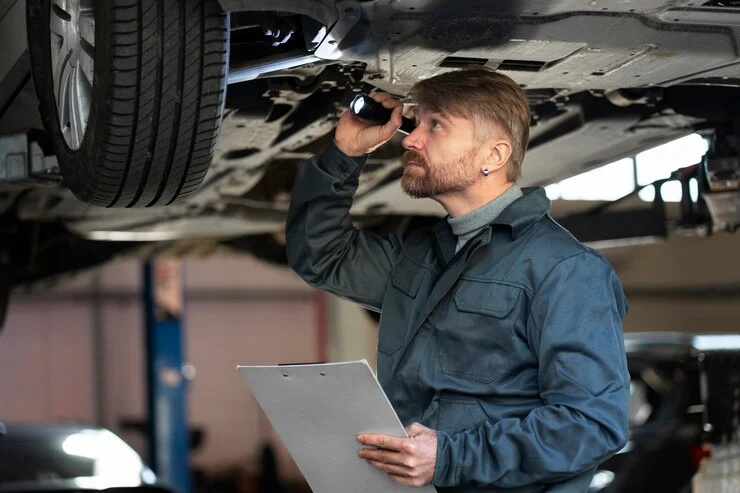
While taking a long road trip is an exciting adventure, you must make sure your car is in excellent condition to ensure a safe and comfortable travel.
You must perform a comprehensive car inspection before driving to prevent unexpected problems and breakdowns, giving you peace of mind and enabling you to enjoy the trip to the fullest.
This comprehensive guide will outline the essential areas to check to ensure a trouble-free journey before setting off on a lengthy road trip.
Tyres
Start your inspection with the tires, which are the foundation of your car. Check that the tire pressure matches the recommended levels found in the owner’s manual for your vehicle.
Safety and fuel economy can both be negatively impacted by underinflated tires. Furthermore, carefully inspect the tread depth for indications of deterioration.
If uneven wear is apparent, think about rotating your tires.
Make sure your lug wrench and jack are in good operating order and don’t forget about the spare tire.
Fluid Levels
You should always check your car’s fluids before a long drive because they are its lifeblood.
Verify that the coolant, power steering fluid, brake fluid, transmission fluid, and engine oil are all at acceptable levels.
Changes might be necessary if any of these fluids seem discolored or smell burnt.
Additionally, make sure there is a sufficient quantity of windshield washer fluid for good vision when traveling.
Brakes
Maintaining the appropriate operation of your brakes is essential for driving safety. Look for indications of deterioration on the braking discs and pads.
Unusual sounds made when applying the brakes, like squeaking or grinding, indicate that maintenance is needed.
Check the level of the brake fluid and add more if needed. If you’re unsure about the state of your brakes, consult an expert.
Lights and Signals
Verify that every outdoor light and signal is working. Headlights, taillights, brake lights, turn signals, and hazard lights are all included in this.
To guarantee the best possible visibility, replace any burned-out bulbs and clean the lenses.
In addition to increasing safety, having adequate lighting while driving is mandated by law.
Battery
It’s important to check the battery in advance because a dead one can ruin your plans for a road trip.
Verify tight connections and look for corrosion on the battery terminals. Get a test done on your battery if it is more than three years old.
Although they are prone to failure, aging batteries can still start the car.
A proactive measure to prevent unplanned malfunctions is to replace an outdated battery before the journey.
Belts and Hoses
Check for wear, cracks, or leaks in the engine hoses and belts. The engine and cooling system of your car depend on these parts to operate correctly.
To avoid any breakdowns while driving, replace any worn-out belts or hoses.
Air Filter
A clean air filter is necessary for the best possible engine performance and fuel economy. If the air filter looks to be blocked or dusty, replace it.
By ensuring that your engine receives a sufficient and clean airflow, a fresh air filter helps to increase engine performance.
Suspension and Steering
Suspension and steering system maintenance are essential for a comfortable ride. Keep an eye out for any odd sounds, vibrations, or steering challenges.
Before leaving on your trip, get any problems inspected and fixed by a qualified mechanic.
Conclusion
An investment in the dependability and safety of your journey is a thorough car inspection before to a lengthy road trip.
You can avoid unplanned malfunctions and ensure a hassle-free journey with routine maintenance and proactive checkups. You’ll be well-equipped to safely enjoy the open road by paying attention to your tires, fluids, brakes, lights, battery, belts, air filter, and suspension.
Recall that planning ahead will help to ensure that your road trip is an amazing experience.
Wishing you safe travels!
